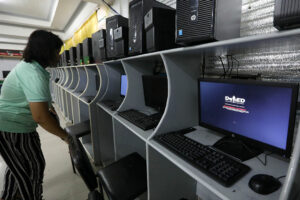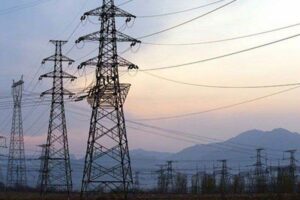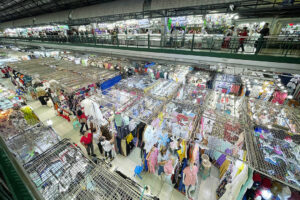The peso slipped back to the PHP 57-a-dollar level on Thursday after the US Federal Reserve delivered a widely expected rate cut and hinted at more easing later this year.
It closed at PHP 57.06 against the greenback, down 17 centavos from PHP 56.89 on Wednesday, according to Bankers Association of the Philippines data posted on its website. It opened at PHP 56.97, its strongest for the day, before hitting an intraday low of PHP 57.10.
Dollar turnover rose to USD 1.55 billion from USD 1.49 billion on Wednesday.
“The dollar-peso closed higher as the market responded to a less dovish stance from the US Federal Reserve after the rate cut announcement overnight,” a trader said by telephone.
The US central bank trimmed its policy rate by 25 basis points (bps) to 4% to 4.25%, its first reduction since December. Fed Chairman Jerome H. Powell said the Federal Open Market Committee could cut again in October and December, citing slowing job creation and labor market fragility.
“You see minority unemployment going up,” he said. “You see younger people more susceptible to economic cycles,” he added, noting that the pace of hiring had fallen below the level needed to keep the jobless rate steady.
The dollar initially fell to its lowest since February 2022 at 96.224 against a basket of peers after the Fed decision but quickly rebounded, rising as much as 0.44% before settling around 97.06.
Michael L. Ricafort, chief economist at Rizal Commercial Banking Corp., said the greenback’s recovery weighed on Asian currencies, including the peso. “The dollar was generally stronger after the Fed cut, coupled with signals of more easing this year,” he said in a Viber message.
The weaker peso adds pressure on the Bangko Sentral ng Pilipinas (BSP), which has said its own policy moves would partly depend on the Fed. Finance Secretary Ralph G. Recto, who sits on the Monetary Board, said this week the BSP could still cut by 25 bps each in October and December if inflation risks remain manageable.
Mr. Ricafort sees the peso trading from PHP 56.95 to PHP 57.20 a dollar on Friday, while the trader sees it at PHP 56.90 to PHP 57.20.
Meanwhile, focus also turned to the Bank of England’s scheduled policy decision, with no change on rates expected.
Sterling was down 0.1% at USD 1.3615 after briefly leaping to the highest since July 2 at USD 1.3726 in the prior session.
The euro was steady at USD 1.1823 after retreating from its highest level since June 2021 at USD 1.19185 on Wednesday in a knee-jerk reaction to the Fed announcement.
Analysts differed over the signals sent by the Fed. While those at Goldman Sachs said that many hints had pointed to Wednesday’s cut being the first among many, their counterparts at ANZ characterized the Fed Chair’s commentary as “not at all dovish.”
“The (Fed’s) revised forecasts highlighted the degree of uncertainty that remains over the outlook,” said Elliot Clarke, head of international economics at Westpac. “The timing and scale of the forecast rate cuts also point to lingering risks for inflation.”
Meanwhile, the Bank of England was widely anticipated to keep rates at 4% when it announces its own policy decision later on Thursday, with financial markets focusing on the potential for a slowdown in its pace of quantitative tightening.
“Any negative surprises on QT today could trigger gilt sell-offs that have proven to spill over significantly onto GBP,” Francesco Pesole, an FX strategist at ING, said in a note.
Official figures on Wednesday showed British inflation at 3.8% in August, reinforcing market expectations that further rate cuts are unlikely to be imminent. — Aaron Michael C. Sy with Reuters







 DOWNLOAD
DOWNLOAD














